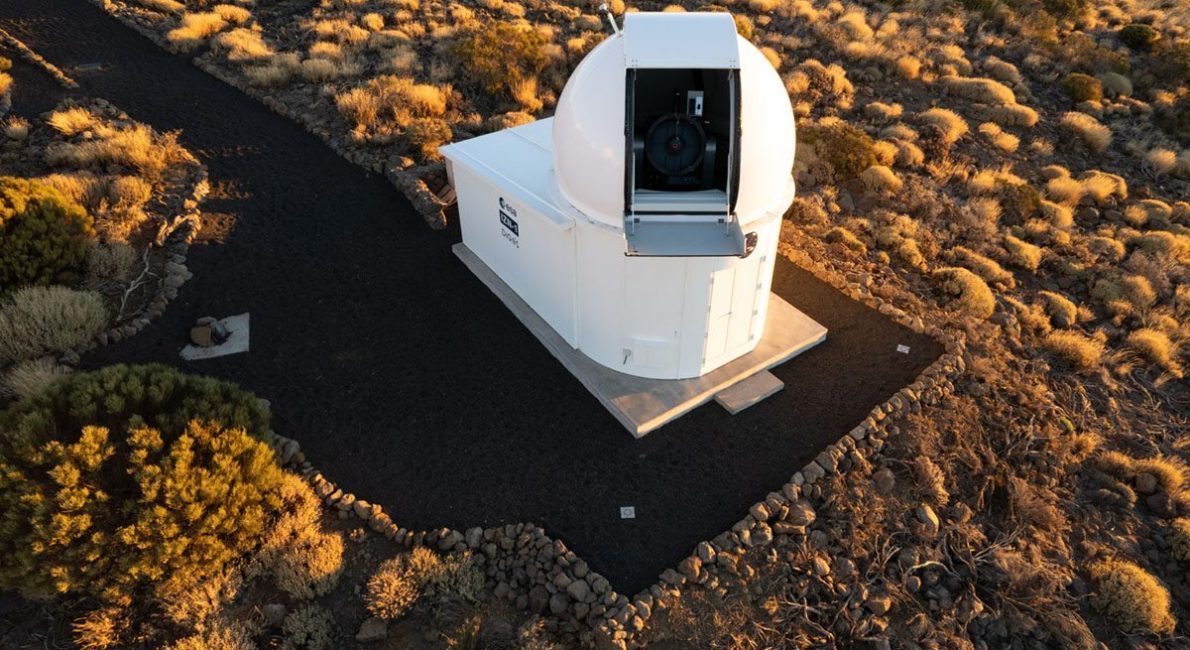Photo: European Space Agency – ESA
Why bother indeed?
Using optical communications offers many significant advantages when compared to Radio Frequency links:
- It is possible to get 10 to 100 times faster data transmission rates which can help reduce the significant bottlenecks in current RF systems. These high data rates are achievable over the long distances associated with communication with space assets. The increased communication capacity allows for transmitting high-resolution data, giving scientists a more detailed look at our planet and solar system.
- Laser light can be directed in a narrow beam which allows “point-to-point” communication. This prevents interference and ensures high-security communication links because interception is difficult.
- Optical links supply the infrastructure needed for Quantum Key Distribution which provides ultra-secure communications and notifications if tampering is attempted.
- The narrow divergence and narrow linewidth of the laser light produce a higher signal-to-noise ratio at the receiver which enables smaller, lower-cost transmitters and receivers with lower power consumption. The reduced size, mass, and power consumption of optical systems compared to their RF counterparts are particularly critical for space-based transmitters and receivers where every liter, gram, and Watt counts.
- Unlike the radio frequency spectrum, the optical spectrum is unregulated. No licensing restrictions apply which means that transmission time is unlimited.
It’s the early days of lasers being used to communicate between earth and space and from spacecraft to spacecraft. We expect to see a large increase over the next few years.
How does a laser beacon system work?
The beacon laser is a critical component in ESA’s satellite communication system. The beacon laser emits a narrow-linewidth modulated laser signal at an eye-safe wavelength from a telescope within an optical ground station.
This signal can be detected by a passing satellite and used to determine the exact location of the ground station so that the optical transmitter on the satellite can be pointed directly to the ground station to downlink data.
In future work, the beacon lasers will also be used for the uplink of data to the satellite as well as for data downlinks from space and even for inter-satellite links.
Where is the NKT Photonics Beacon Laser being used?
The European Space Agency (ESA) has installed the NKT Photonics Beacon Laser into the ranging station in the “IZN-1” at the Teide Observatory in Tenerife. ESA plans to use it for Low Earth Orbit Direct-to-Earth (LEO-DTE) optical communications.

Why did ESA choose NKT Photonics to supply a beacon laser?
NKT Photonics was able to build this beacon laser as they had the required mix of technical know-how, experienced staff, and the equipment needed to build this sort of system. The use of sophisticated fiber laser and amplifier technology and advanced electro-mechanical integration enabled NKT Photonics to develop a turn-key one-box solution that was not available anywhere on the market.
What does the beacon laser system provide?
The beacon laser provides a CCSDS standard compatible 1590 nm signal at two selectable modulation frequencies, 10 and 100 kHz. The average output power is 6 W with a 15 W peak power and a linewidth below 50 GHz. It comes with a convenient 15 m fiber delivery cable with a collimator. The flexible, modular design can be configured for different wavelengths, power levels, and modulation schemes to cover both CCSDS and SDA standards. It obviously comes in a red box.
Want to know more?
Get all the technical details in the publication “Beacon system for ESA IZN-1 Optical Ground Station” published by IEEE, 2022.



